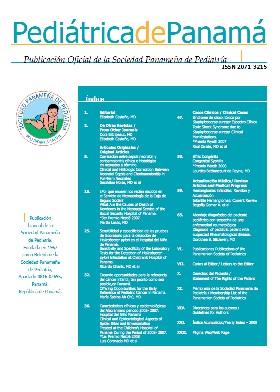Panama in stats: Neonatal metabolic screening 2013 to 2018
Authors
DOI:
https://doi.org/10.37980/im.journal.rspp.20222124Keywords:
Neonatal screening, Statistics, Panama, MetabolicAbstract
Introduction: The World Health Organization considers neonatal screening as one of the greatest achievements in the global public health prevention program, due to its high capacity to identify and treat diseases on time; thus, preventing physical and/or cognitive disability. The Republic of Panama creates: The Law number 4 of January 8, 2007, of the Screening Program that establishes the obligatory nature of neonatal screening and dictates other provisions.
Materials and methods: It is a retrospective descriptive study of metabolic neonatal screening in the Republic of Panama in the period 2013-2018. The universe consisted of all newborns screened during that period. The population sample includes data from the metabolic neonatal screening of the Ministry of Health, Social Security Fund and private health facility.
Results: The average number of live births between the period 2013 to 2018 was 75 thousand newborns per year, the number of newborns screened between that period was 55 thousand newborns per year with an average coverage of 72.3% and a detection rate of average altered screening of 5.6% (average 3680 live births).
Discussion: The awareness of the general population and health personnel about neonatal screening is vital for the prevention of physical and cognitive disabilities and/or infant deaths.
Conclusions: Neonatal screening has a detection rate of altered screenings of 5.6% per year, for which it is important to improve coverage at the level of the Republic of Panama
Downloads
Published
Issue
Section
License
Copyright (c) 2022 Infomedic Intl.Derechos autoriales y de reproducibilidad. La Revista Pediátrica de Panamá es un ente académico, sin fines de lucro, que forma parte de la Sociedad Panameña de Pediatría. Sus publicaciones son de tipo gratuito, para uso individual y académico. El autor, al publicar en la Revista otorga sus derechos permanente para que su contenido sea editado por la Sociedad y distribuido Infomedic International bajo la Licencia de uso de distribución. Las polítcas de distribución dependerán del tipo de envío seleccionado por el autor.






